Situated just six miles north of the Turkish-Armenian border and eleven miles east of the Armenian capital of Yerevan is the city of Etchmiadzin. It’s the fourth-largest city in Armenia but is still quite small with only 46,540 residents as of 2011. Though Etchmiadzin may be small in size, it’s a giant when it comes to history and religion. Due to its significance, there are many reasons why you must visit Etchmiadzin, Armenia.

Officially known as Vagharshapat, Etchmiadzin is Armenia’s holiest city. Armenian residents consider it the country’s spiritual capital. It’s home to the Mother See of Holy Etchmiadzin, which governs the Armenian Apostolic Church. Armenia adopted Christianity in 301 AD, making it the first country in the world to do so. Several churches from the era still stand today in Etchmiadzin. Because of this, they are some of the oldest Christian churches in the world. Five of these churches are UNESCO World Heritage Sites.
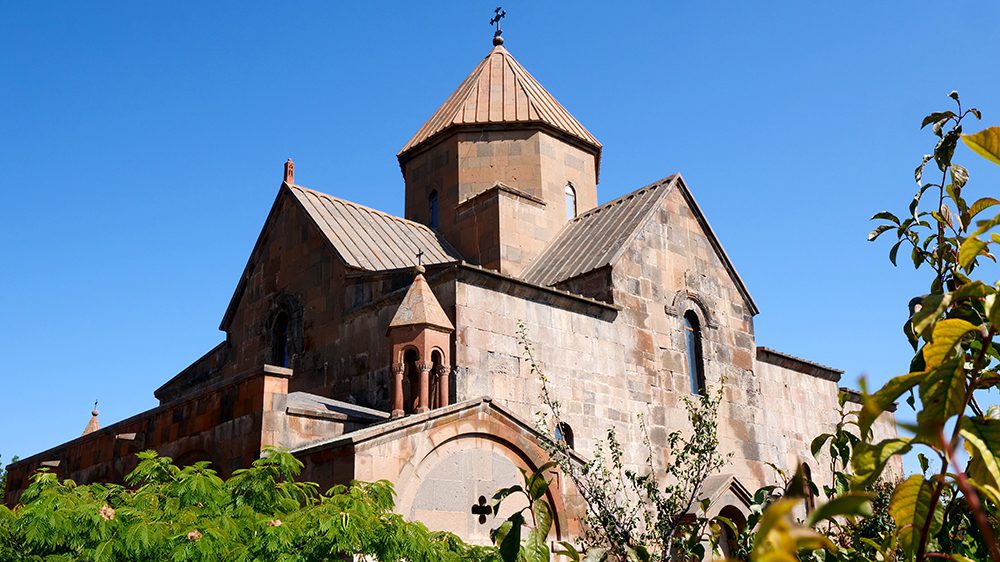
In addition to its religious and historical significance, Etchmiadzin is also a fantastic city to learn more about Armenian culture and cuisine. During my visit in late September of 2019, I fell in love with its food, culture, and historical sites. It’s a beautiful city that may seem one-note to some at first glance. But as you dive deeper, you realize there are many more layers to it. These are the 5 reasons why you must visit Etchmiadzin, Armenia.
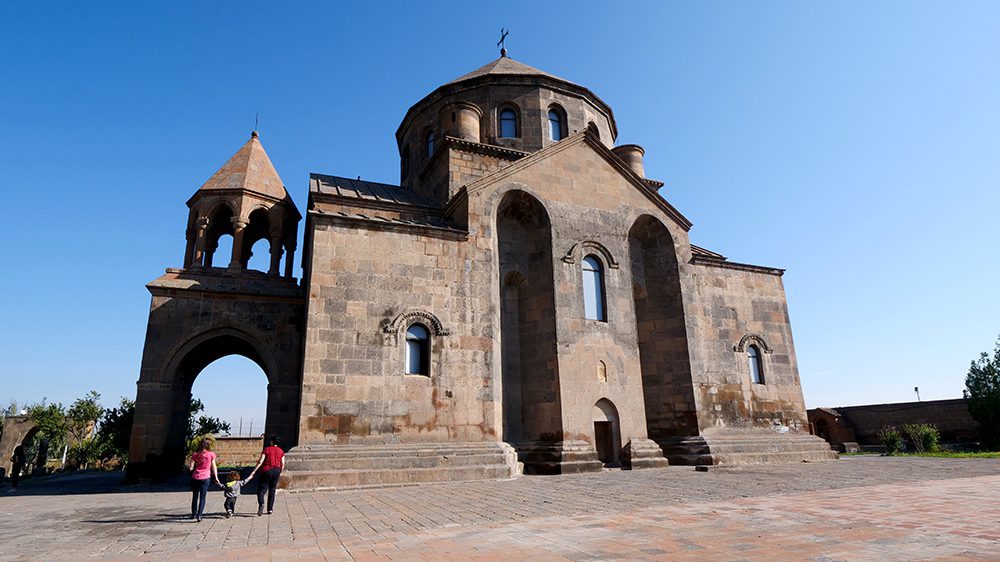
As I mentioned above, Etchmiadzin is home to some of the oldest surviving Christian churches in the world. The first one I visited was Saint Hripsime Church, which dates back to the year 618 AD. This Armenian Apostolic church is dedicated to Saint Hripsime, a beautiful 3rd-century nun who fled Rome with Saint Gayane and 38 fellow nuns to avoid unwanted advances from the emperor, Diocletian.
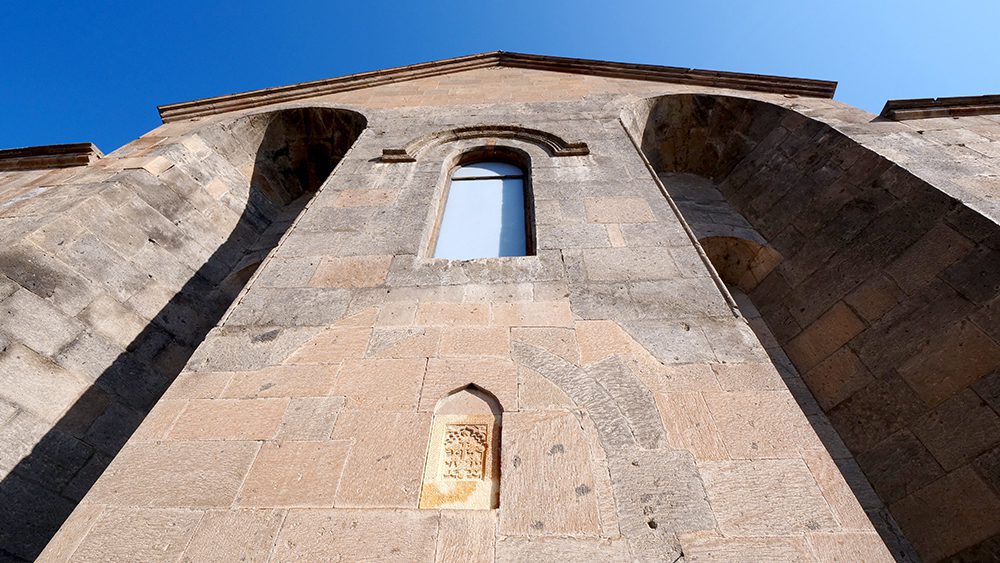
After coming to Etchmiadzin, she attracted the attention of the king of Arsacid Armenia, Tiridates III. When she rebuffed him and said she was committed to Jesus Christ, she and her fellow nuns, including Saint Gayane, were tortured and put to death. It is thought that their martyrdom occurred sometime around the year 290, making them some of Armenia’s first Christian martyrs. Archaeological excavations around the church have found the remains of women who show signs of torture.
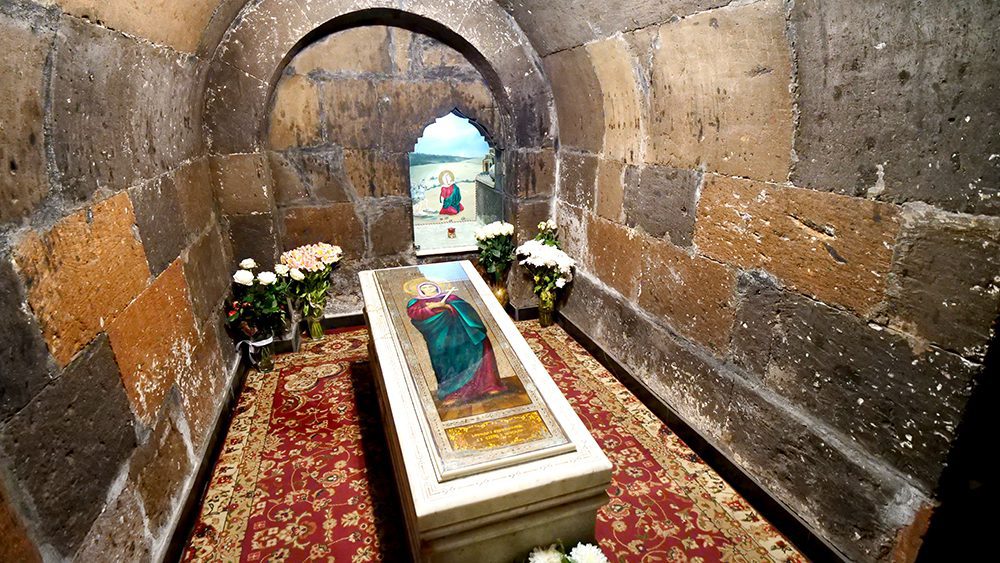
A few years after Saint Hripsime’s death, Armenia officially converted to Christianity in 301 with the help of the religious leader Gregory the Illuminator. According to King Tiridates III’s secretary, Agathangelos, Gregory and the king built a martyrium church over her grave, though the church that stands today wasn’t built until over 300 years later.
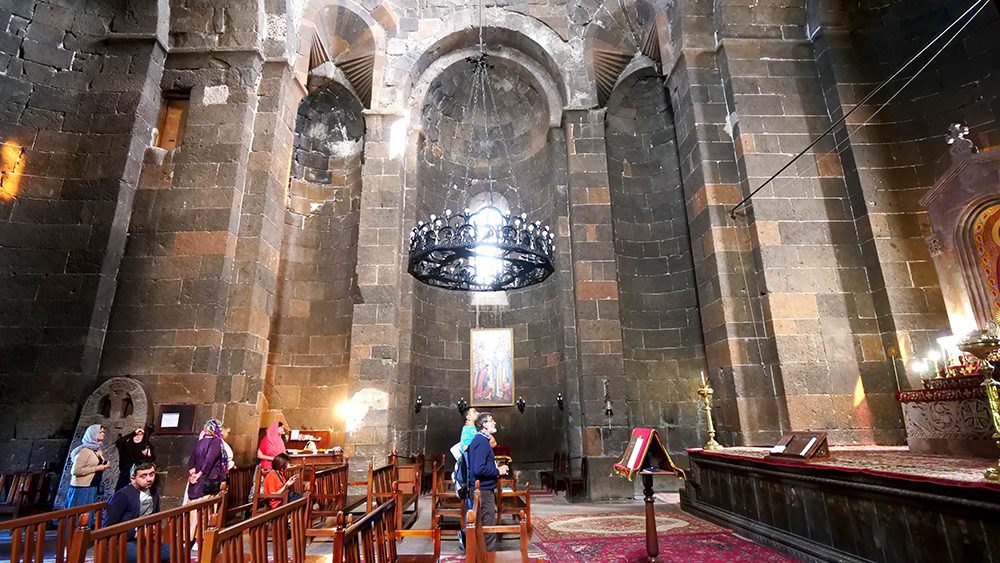
Like many locations around Armenia, the 1,400-year-old church dedicated to her features a fountain that offers fresh, free drinking water. The church itself is a cross-shaped cupola church, one of the first in Armenia. It is built from tuff, a type of volcanic stone that comes in many shades and tones. Saint Hripsime Church is known for its classical Armenian architecture and specially-made corners, which bolster its stability in the seismically-active country.
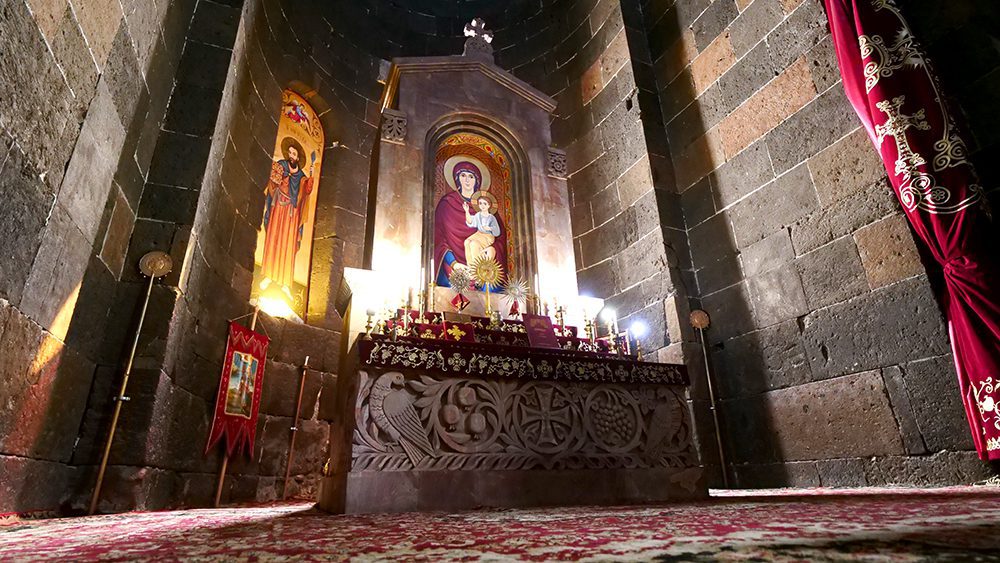
When you walk inside the church, you can see the original carved door, which features a large cross, on the left. It’s absolutely beautiful inside, and you can really feel how ancient it is, even though it fell into disrepair by the 17th century and has been restored and renovated several times since then. It’s a gorgeous example of medieval churches and one of the top reasons why you must visit Etchmiadzin, Armenia.
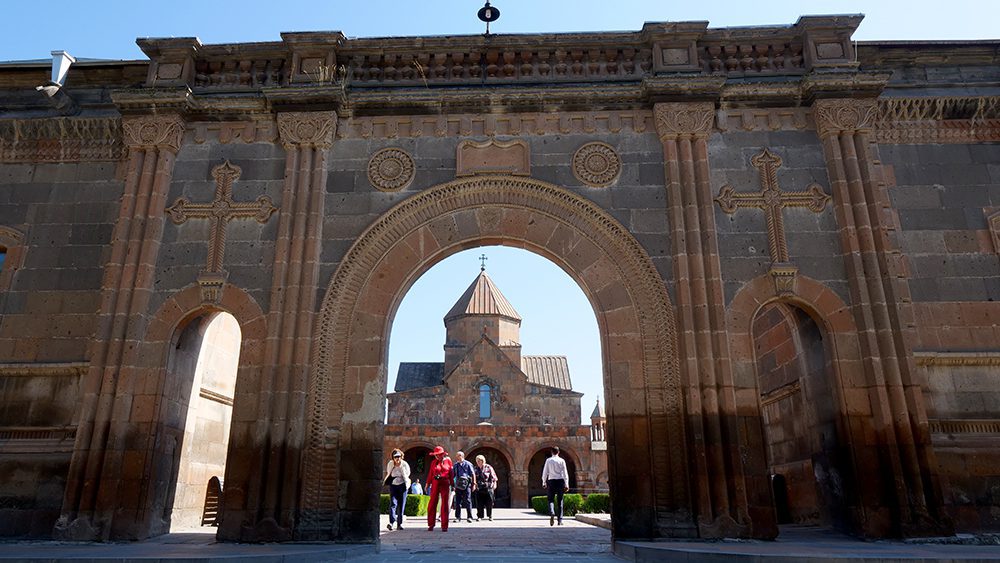
The leader of the group of nuns that included Saint Hripsime was Saint Gayane, who was also stoned and killed in Etchmiadzin after being found out by the king. Like Saint Hripsime, a church was later erected in her honor at the site of her torture and martyrdom.
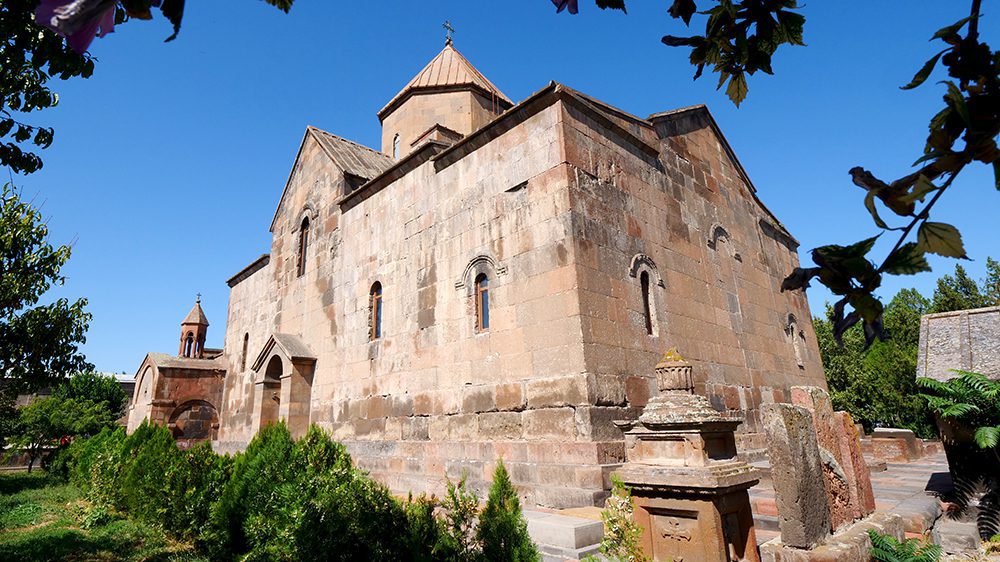
The 7th-century Church of Saint Gayane dates back to the year 630. Its grounds feature beautiful gardens to the left and right as you approach. There are also tombstones outside, which mark the graves of bishops, priests, and others who were important to the church in the 17th century.
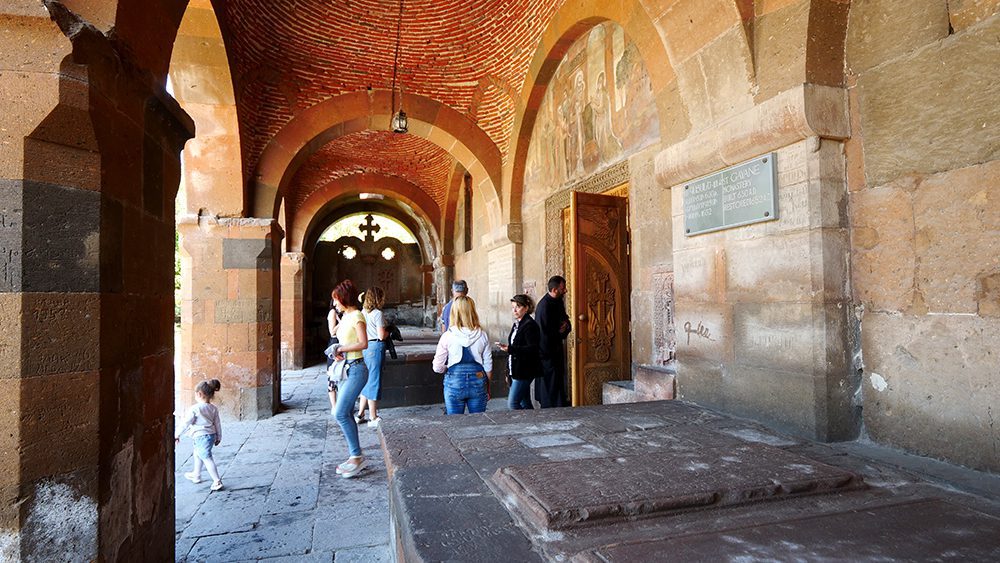
Though the church was built just 12 years after Saint Hripsime Church, there are marked differences in their architecture. While Saint Hripsime Church is a cross-shaped cupola church, the Church of Saint Gayane is a four-pillar cupola church.
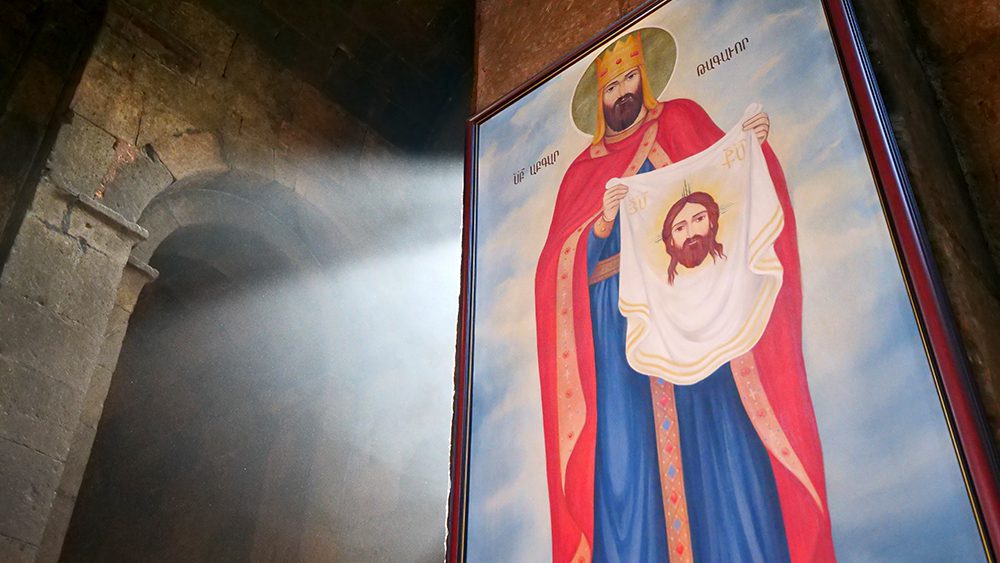
It also features two small cupolas and three archways above its entryway. The majority of the church was constructed in the 7th century, but the current entryway was built in the 17th century. Above the door is a gorgeous painting. Next to the door is an ancient stone cross that is thought to have been moved there to keep it intact.
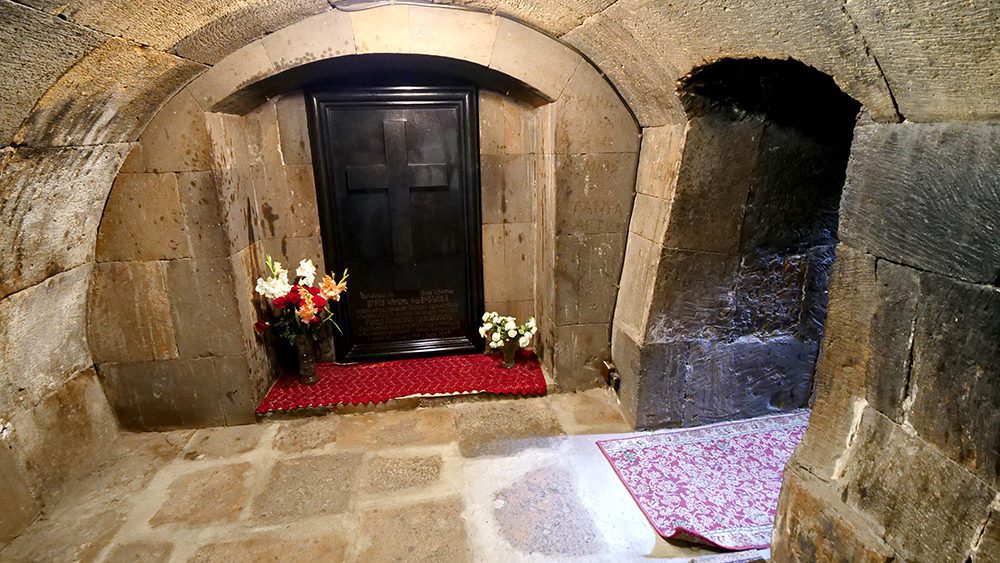
Inside, the church has a very mystical, spiritual feeling thanks to the amount of natural sunlight that filters down through the windows. It’s no surprise at all that the church is yet another of Etchmiadzin’s UNESCO World Heritage Sites. There are lots of paintings throughout the beautiful space, as well as an altar in the back. If you’d like, you can also buy rosaries and candles from the gift shop in the back left corner.
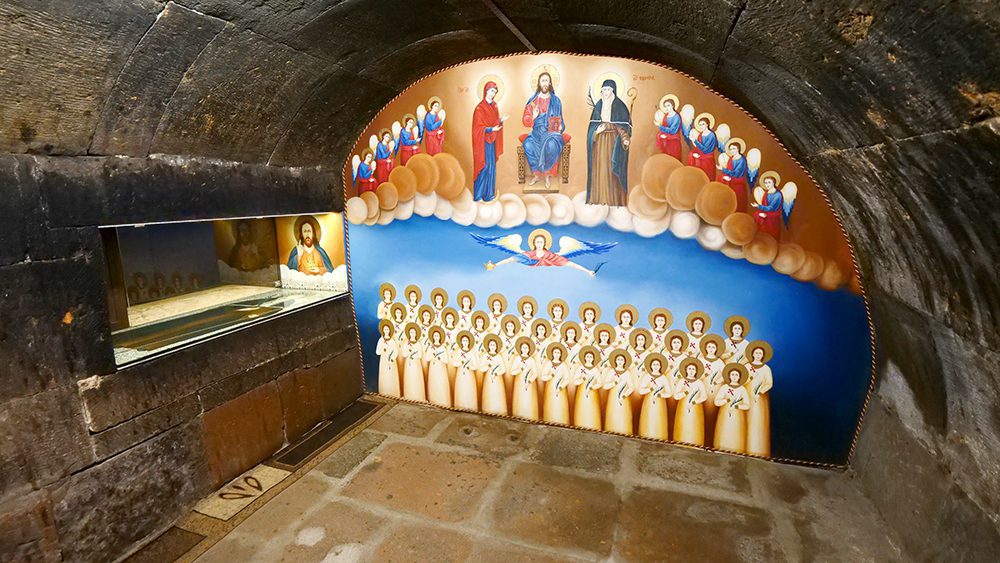
There, you can visit Saint Gayane’s crypt, which features a painting of the martyred nuns. In the small chamber, you’ll also find a tombstone on the wall and a small altar with an inscription beneath it. Even if you’re not religious, it’s hard to not feel that this is a special, holy place when you visit. It’s one of the reasons why you must visit Etchmiadzin, Armenia, for sure.
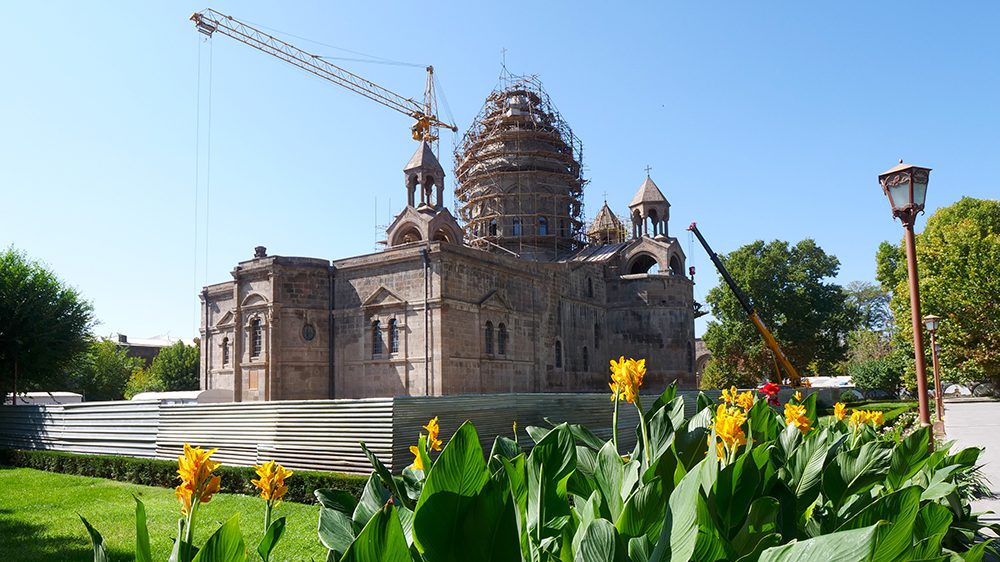
Another of the top reasons why you must visit Etchmiadzin, Armenia is Etchmiadzin Cathedral. This UNESCO World Heritage Site is also known as Holy Mother Cathedral and is the mother church of the Armenian Apostolic Church. It is also widely considered the oldest cathedral in the world.
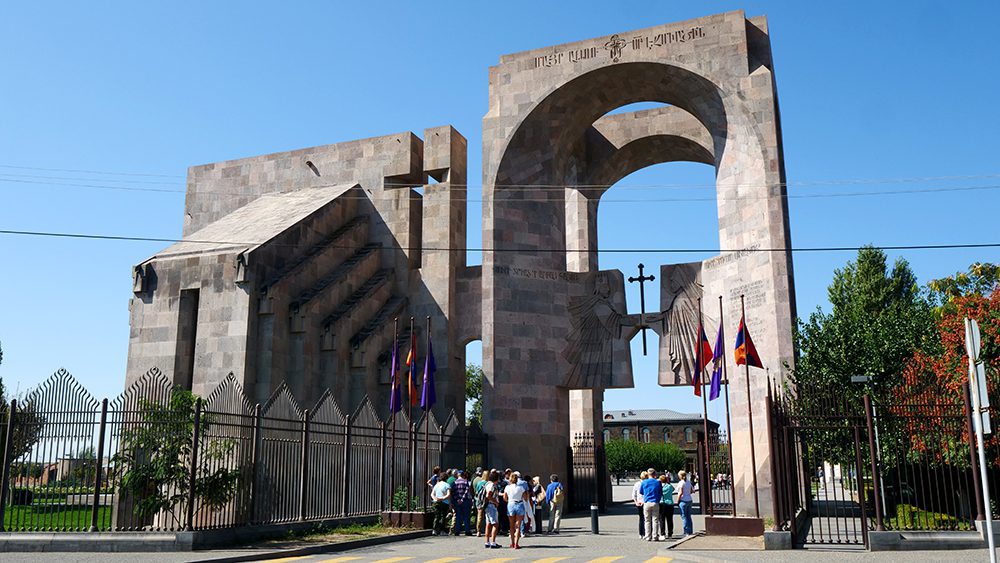
The original cathedral was built by Gregory the Illuminator between 301 and 303 AD after King Tiridates III adopted Christianity as the state religion. According to legend, Gregory chose the location for the cathedral after having a vision. In his vision, Jesus Christ descended from heaven and struck the ground with a golden hammer.
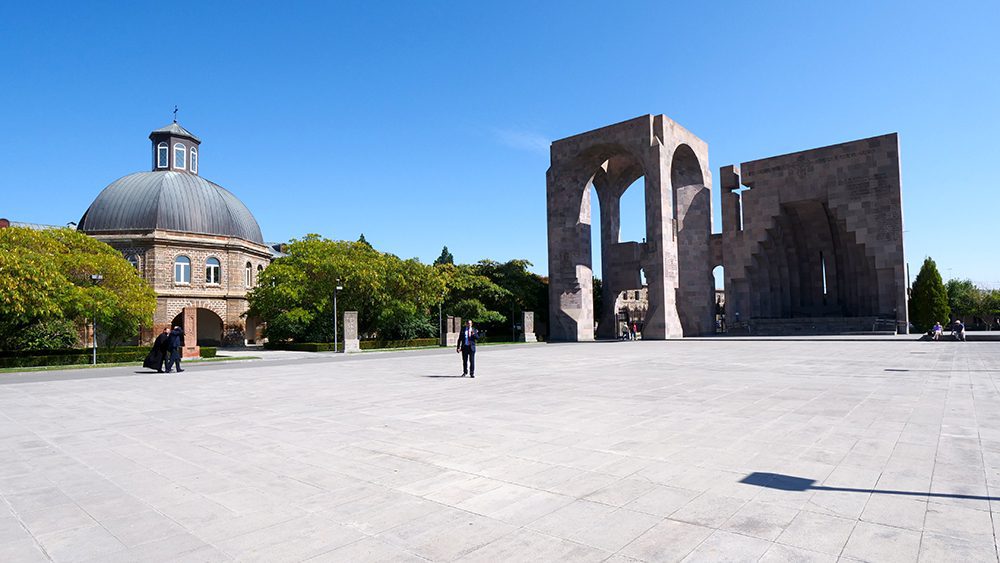
The place Jesus Christ struck the ground in the vision was the site of a pagan temple not far from the Royal Palace. Etchmiadzin Cathedral was then built over the temple, symbolizing the country’s shift from polytheism to Christianity.
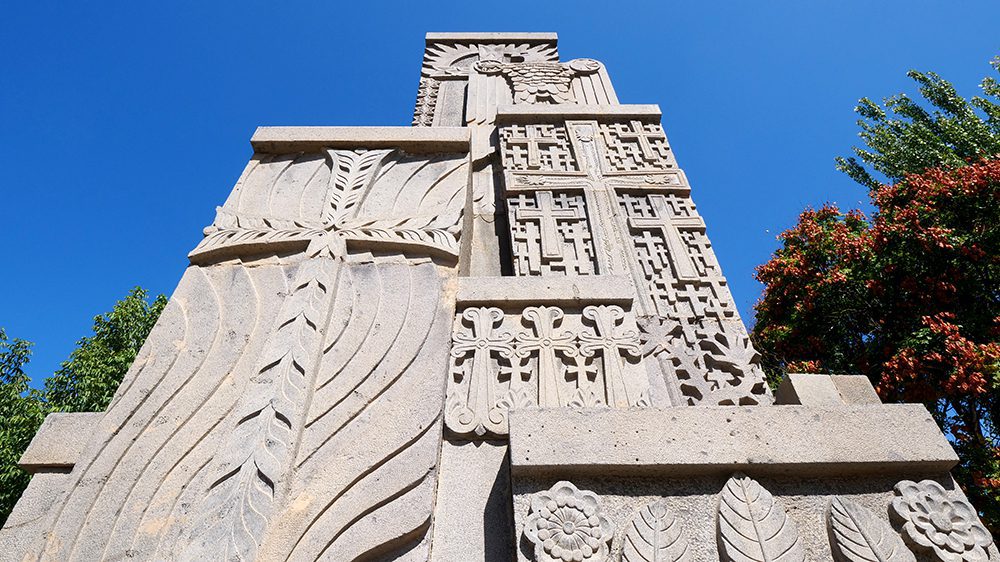
A massive carving of Gregory and the king greeting each other can be seen on the massive main gates of the cathedral. The cathedral is a major pilgrimage site for Christians worldwide and is the main shrine for Armenian Christians around the world.
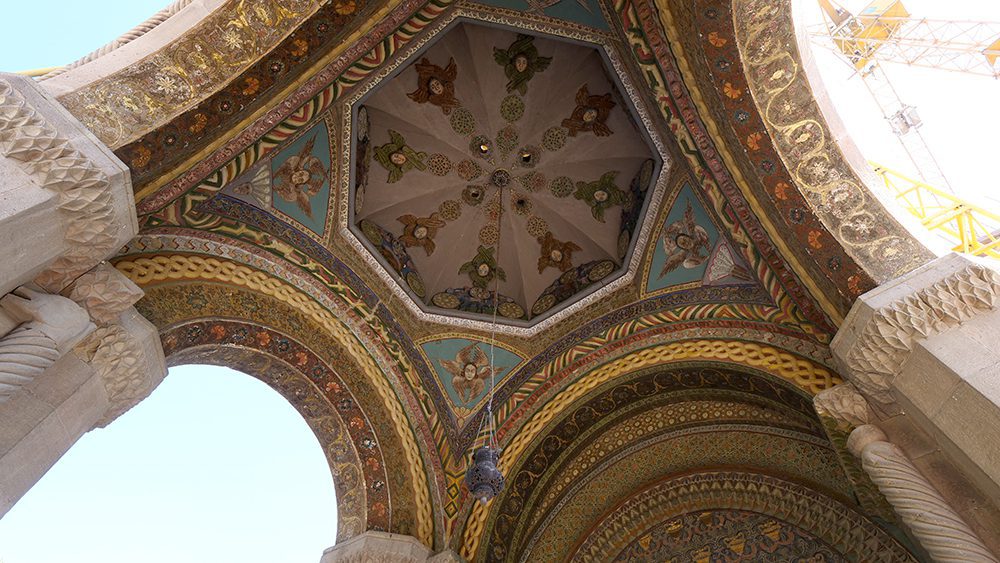
Unfortunately, I didn’t get to go inside the cathedral during my day trip to Etchmiadzin, as it was undergoing restoration. But even viewing it from a distance through the scaffolding, I could tell it was a magnificent building.
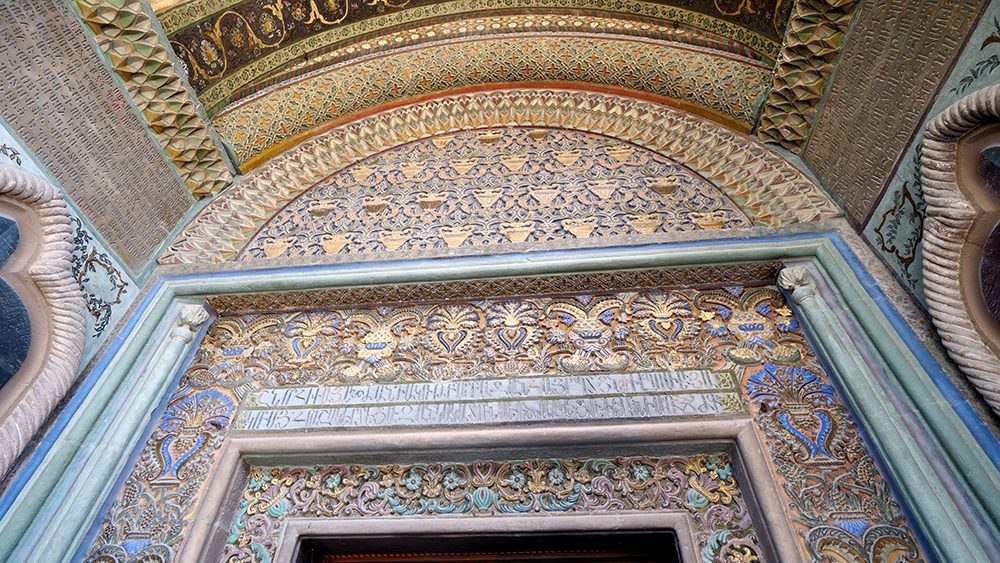
Etchmiadzin Cathedral isn’t the only noteworthy site in the vicinity, as a nearby library houses over 70,000 books. These books, written in 40 different languages, include the first printed Bible in the Armenian language. Also of note is a cross-stone built in 1965 that honors victims of the Armenian Genocide that took place in the early 20th century.
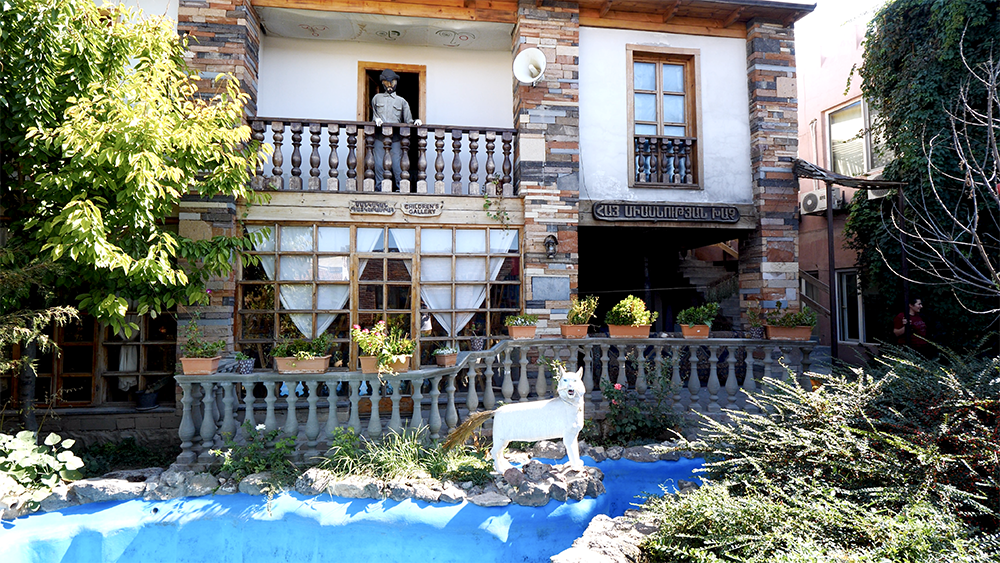
While it’s easy to get lost in the rich and fascinating history of Etchmiadzin, there are other aspects of Armenia to explore in the city. I’m all about having unique and authentic cultural experiences when I travel, and for that, my guides from Armenia Travel took me to Machanents Cultural Center.
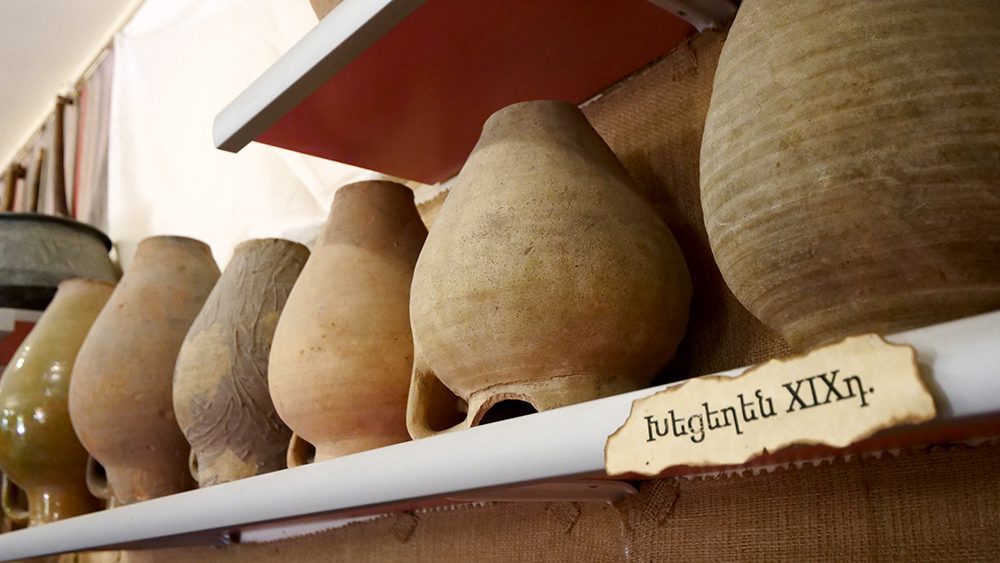
Machanents Cultural Center is a farmhouse-style complex. It’s part museum, part restaurant, part school, and part bed and breakfast. It reminded me of a farmhouse I had once visited in Bulgaria. The museum section is home to Armenian artifacts including Bronze Age pottery, pottery from the 12th and 13th centuries, wooden barrels, telephones, and much more. Two of my favorites included a medieval clay pipe that was used to transport cow milk and a large water jar that women used to carry water to their families.
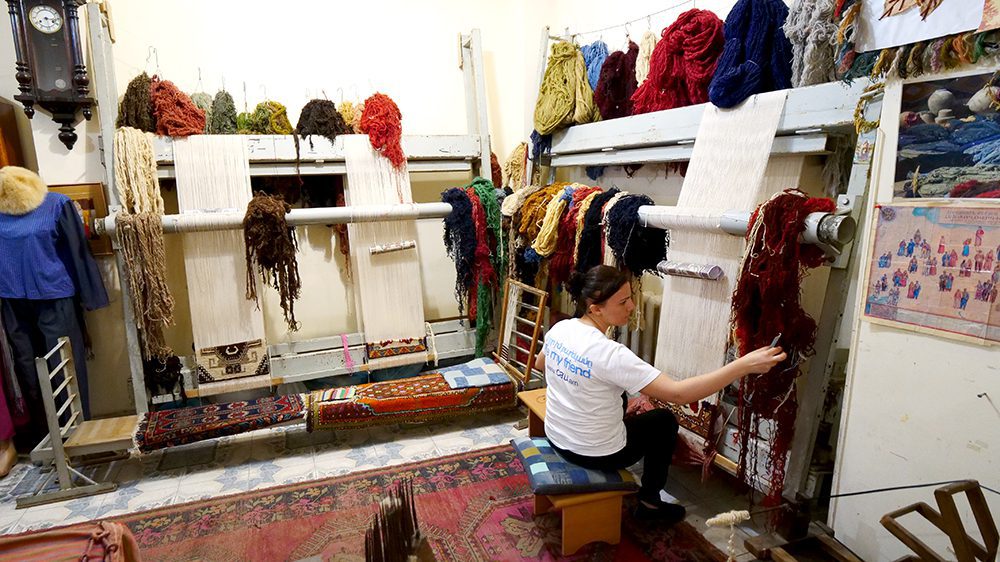
Carpet-making is a treasured, traditional artform in Armenia. The practice dates back as far as the 14th and 15th centuries BC. In the museum, you can also watch women weave carpets using natural wool colored with natural dyes. The weavers use the double-knot weaving technique, which makes the process different from Persian and Iranian carpet makers.
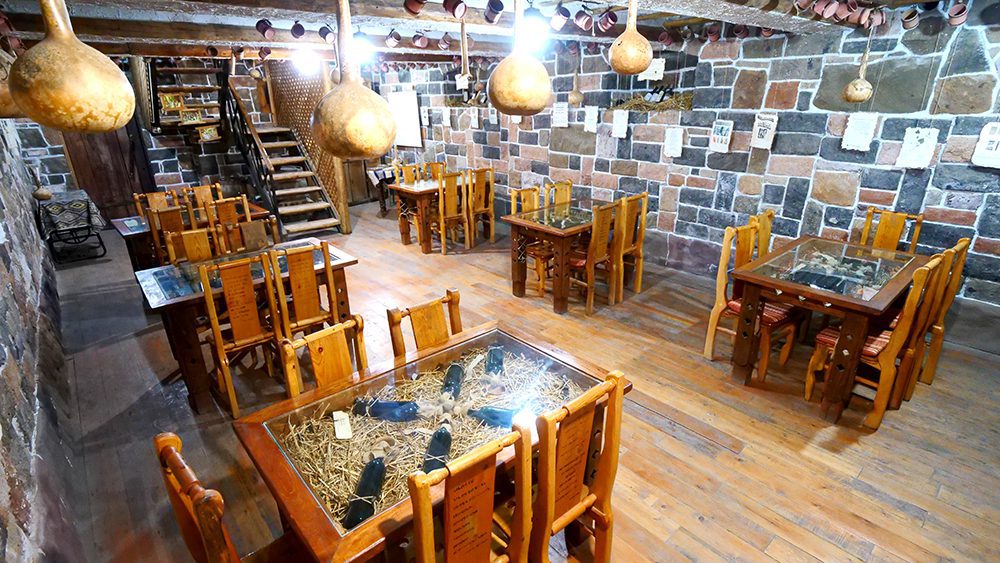
In addition to its museum, the Machanents Cultural Center is also a school. They hold master classes that teach visitors about different aspects of Armenian culture. Children come there to study Armenian culture as well.

Visitors to Machanents Cultural Center can also visit their tavern, which has a very authentic and old-school feel to it. There, they keep and age wine in the charming space. Around the walls are poems about wine, written in different languages. You’ll also find bottles of wine for people in countries all over the world. But the coolest features of the tavern are the tables, which have glass tops. Guests can actually view the wines being aged inside the tables!

If you have the time, I recommend staying overnight at the Machanents Cultural Center. They have a beautiful bed & breakfast with 12 rooms. Each room has its own unique theme and contains gorgeous furniture handmade by Armenian craftsmen. It’s a great place to enjoy meals and learn about Armenian history and culture. Plus, it’s just minutes away from the notable sights around the city!
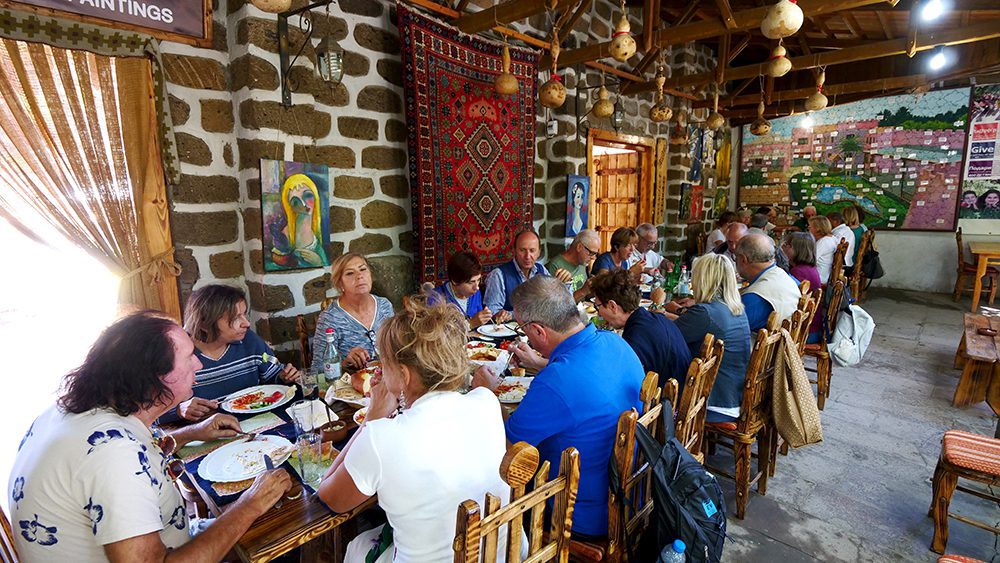
As I mentioned earlier, Machanents Cultural Center is much more than your average culture museum. It’s also a fantastic spot to enjoy authentic Armenian cuisine, including popular dishes like their famous breads, cheeses, and wines, as well as others that may be more obscure to visitors.

Armenian cuisine is all about using fresh ingredients, and it’s on full display at the cultural center. Be sure to try some freshly baked lavash (a type of Armenian flatbread) with the various cheeses, vegetables, and herbs.

One of my favorite cheeses contained bits of red pepper and was outstanding! The cheeses here range from mild to strong and pungent, so I suggest trying them all to see which one you like the most!

You also have your choice of several salads, including one containing cucumbers and tomatoes, a cabbage salad, and a carrot-and-pea salad. The salads are as fresh as they come, since the food in Armenia is the definition of farm-to-table. You can taste the quality and care that goes into making these dishes!

Other outstanding dishes include vegetables cooked in local brandy, fried lavash with lentils and chicken, bulgur wheat with crispy onions, a tender and juicy veal with wine and vegetable, and more!
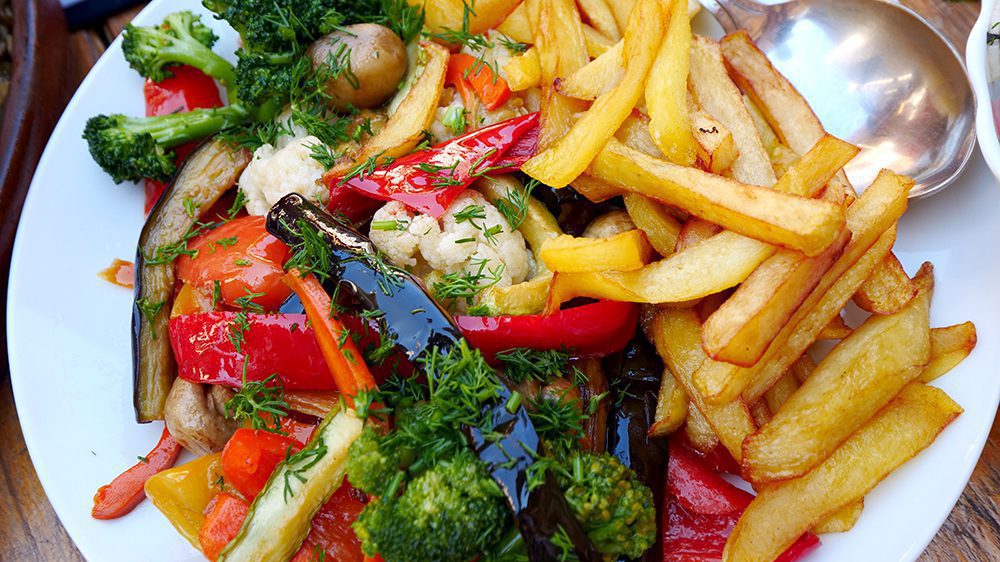
The fried lavash with lentils was a wonderful dish with tons of different textures. For an added creaminess, add a tzatziki-like creamy garlic sauce called matsoun. The pieces of fried bread reminded me of fried wontons, while the lentils were nice and dense. You cannot miss the buttery veal, which falls apart in your mouth and comes with soft and flavorful roasted peppers and carrots. The bulgur wheat with onions was also quite nice, but with so many extraordinary options on my plate, it was probably my least favorite of the bunch.

My personal favorite dish was the eggplant with mushrooms, cheese, and beef. The cheese had melted throughout, and yet the flavors and ingredients were perfectly balanced. The moist, tender eggplant dish was topped with cream and was heaven on my palate.
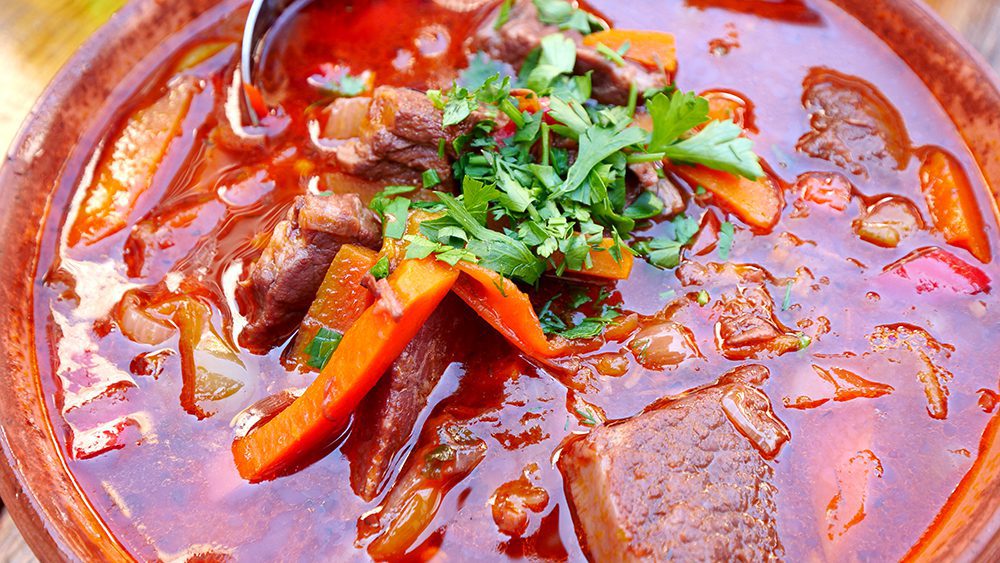
After one bite, I was addicted! I’m an admitted eggplant fanatic and have eaten it all over the world, but I’ve never had an eggplant dish as delicious as this one.

And if you have a craving for fresh fruit, the trees outside the center are full of apricots. If you like, you can climb up and get one! They’re tasty and quite juicy when they’re in season! If that’s not enough for you, I learned from my guide Lusine that it’s popular to open up the apricots and drink vodka out of them. It sounded delicious!

During your time at Machanents Cultural Center, you would be remiss if you didn’t participate in one of their master classes. When I visited, I learned about a traditional Armenian technique for cooking fish. It is one of the most bizarre, unique, and fascinating things I’ve ever seen in my travels and totally blew my mind!
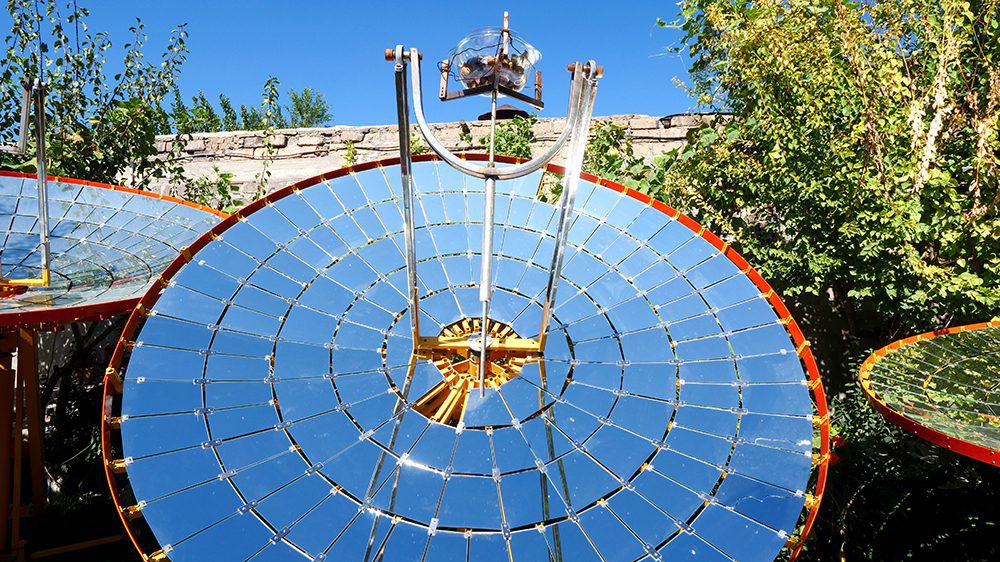
First, they add walnuts a glass pan and place raw pieces of salted trout on top of them. Then, they take the glass pan and take it to a contraption outside that looks like a mirrored satellite dish. The pan is placed in a small cradle on the contraption, and the dish is turned toward the sun. I had never seen anything like it!

The contraption’s purpose is to catch the rays of the sun. The mirrors amplify the heat from the rays and bounce them back toward the dish. The dish itself glows so brightly that you can’t look at it directly. Then, after just a few minutes, the dish starts to steam! The temperature inside the dish climbs up to a whopping 700° Celsius, or nearly 1,300° Fahrenheit!

During the summer months, the fish can completely cook in as little as three minutes, but on this day, it took between 10 and 15 minutes. Seeing fish cooked this way is one of the top reasons why you must visit Etchmiadzin, Armenia.
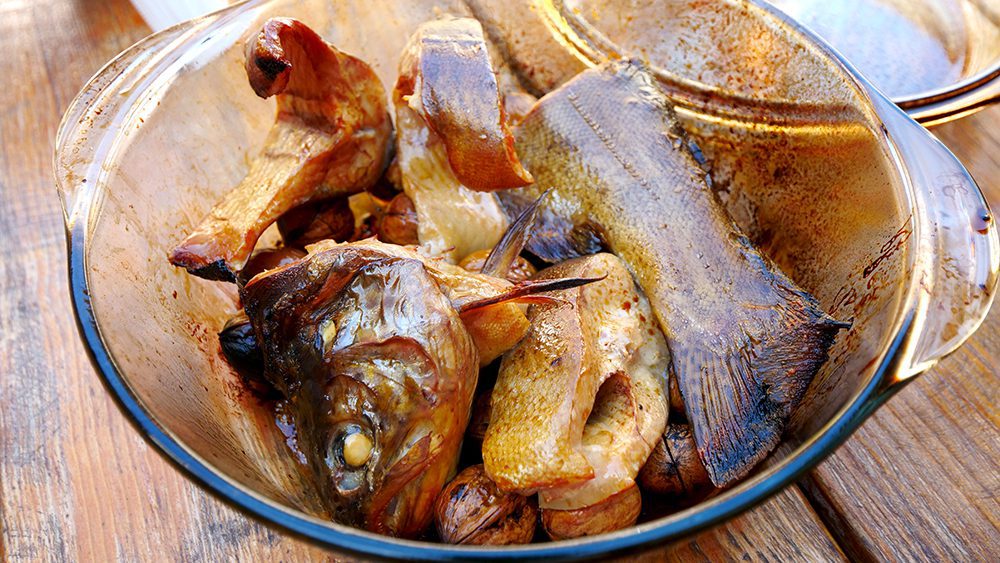
After the fish cooks, you get to sample it! Even though no oil or excess water is added to the fish, it comes out perfectly moist and flaky. The flavor from the walnuts gets infused into the meat during the cooking process, giving it a unique taste I’d never had before. The skin gets nice and crispy and is full of smoky walnut flavor. Just be sure to pull the trout apart; it’s full of tiny bones and spines that can get lodged in your throat!
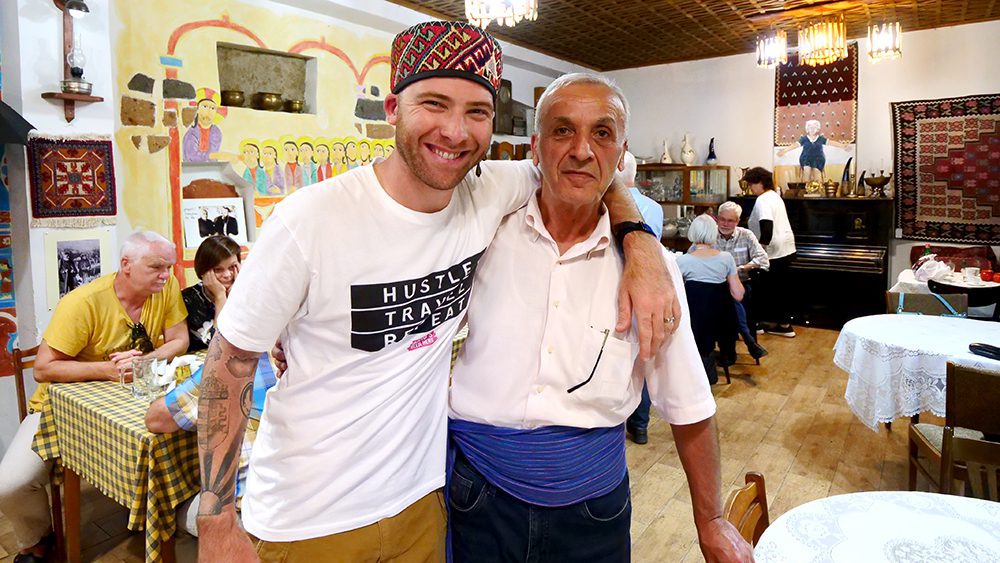
Inside the Machanents Cultural Center is another special place you can enjoy a meal. It’s called the Song of the Old Days Room. At first glance, it looks like a typical dining hall or restaurant. But then you realize that all of the people working there are senior citizens.

This restaurant was specifically made for grandparents who needed a place to work! Because it’s typically harder for older people to find work, the Song of the Old Days Room is a godsend for elderly Etchmiadzin residents who need or want a job. It’s a beautiful thing they’ve done there, and if you have the time, I strongly urge you to have a meal there!
While Etchmiadzin is mostly known as a pilgrimage destination for Christians, it’s so much more than that. It’s brimming with exciting options for curious travelers looking to learn more about Armenia’s religious history, culture, food, and people. It’s a beautiful and charming city that captured my heart the moment I arrived there. And while there are many more reasons why you must visit Etchmiadzin, Armenia, these are at the very top of my list. Book a flight to Yerevan and plan a day trip to Etchmiadzin today!
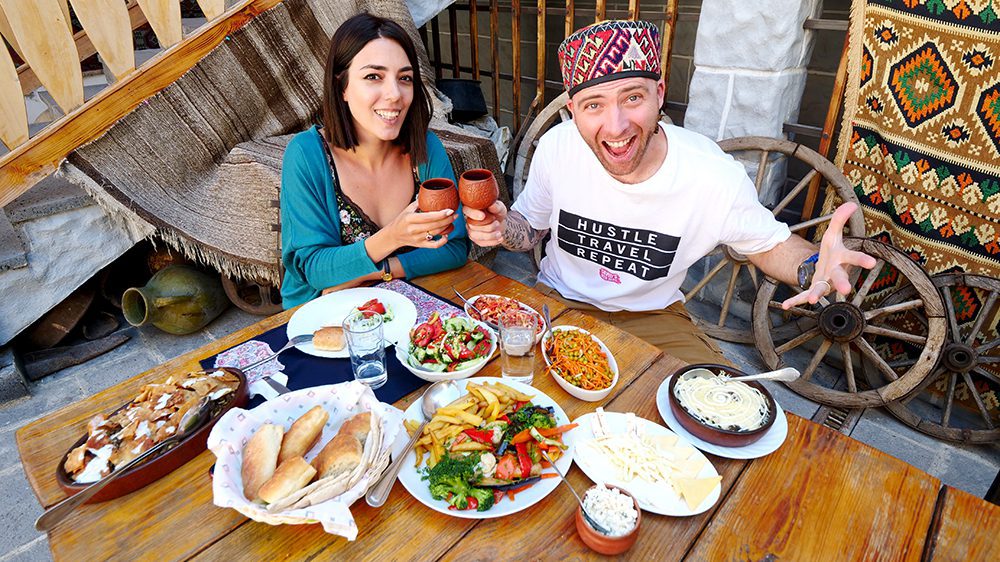
Special thanks to my friends at Armenia Travel for their kindness, hospitality, and for arranging my trip. I couldn’t have done it without them!
Also, if you would like to visit Etchmiadzin, please contact Lusine.
NOTE: If you need to check the visa requirements of a particular country, click here. To apply for a visa, find up-to-date visa information for different countries, and calculate the cost of a particular visa, click here!
Counter
101 Countries • 1432 Cities